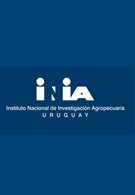ABSTRACT.- We reviewed the history, epidemiology, clinical signs, pathology, pathogenesis, treatment, control, and prophylaxis of Sorghum poisoning in livestock. Economic losses in the livestock industry associated with sorghum have been reported since the 19th century. Hyperacute/acute poisoning associated with cyanide (HCN) or nitrate/nitrite frequently occurs in ruminants that consume high quantities of growth and regrowth sorghum after drought, followed by rainfall, respectively. Chronic cystitis-ataxia syndrome primarily affects horses after weeks of grazing on sorghum pastures, while congenital arthrogryposis and axonopathy have been observed in pregnant ewes and cows grazing sorghum sprouts. The hyperacute/acute manifestations result from the blockade of the respiratory chain by cyanide. However, the pathogenesis of chronic exposure leading to spinal cord lesions, as well as the potential teratogenic effects of cyanide, including abortions and limb deformities in both livestock and humans, remains unknown. Sodium thiosulphate is recommended for the treatment of acute poisoning. Prophylaxis for sorghum poisoning includes avoiding grazing on plants younger than seven weeks, removing sorghum from the diet of poisoned animals, and being cautious with sorghum stover after rain due to regrowth
risks. © 2025 Published by Elsevier Ltd.

